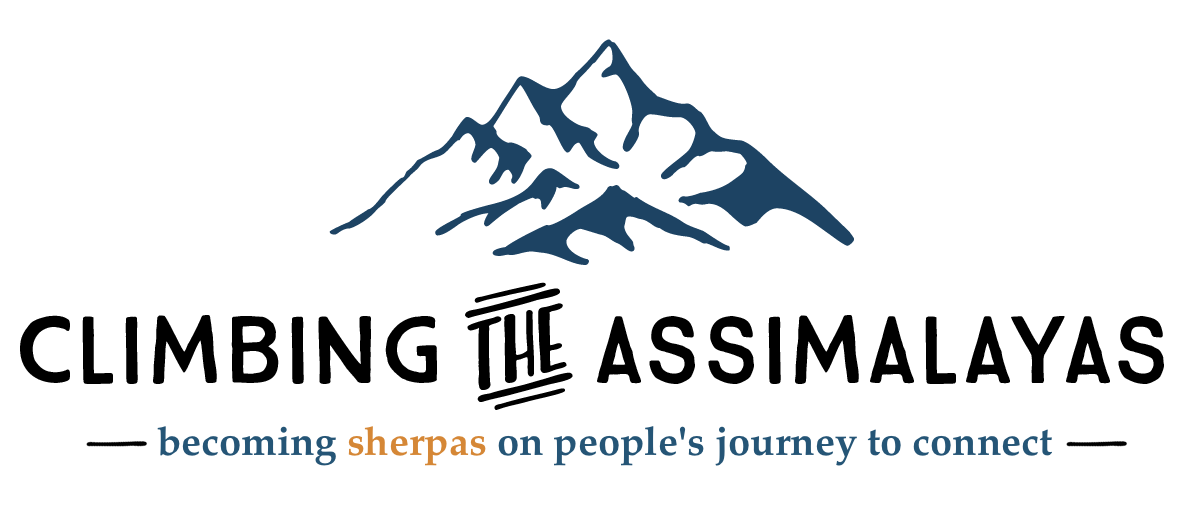We struck assimilation gold!
Sutter's Mill, where gold was first discovered in California and where I have taken hundred up people white water rafting over the years.
On January 24, 1848, James Wilson Marshall, a carpenter from New Jersey, found flakes of gold in the American River at the base of the Sierra Nevada Mountains near Coloma, California. “It made my heart thump, for I was certain it was gold”, Marshall later recalled. In time, 750,000 pounds of gold was extracted from the ground in California.
The Gold Rush had begun.
That's how I felt while on a getaway with my wife Michelle up in the California mountains for our anniversary. We decided on Sunday morning to watch the live stream of our church's worship service and took communion together. When the live stream was over, I had my Jim Marshall moment: my fingers grazed the mousepad on my laptop after I paused the video.
That's when it happened.
That accidental touch made the livestream window scroll up, and made the unseen part of the page fill the screen. It asked for decisions of "Salvation", info on certain ministry teams, and a section to submit prayer requests. I immediately showed Michelle and asked 2 questions out loud:
- Who wrote this? (it didn't use the language our pastor or assimilation environments used and it listed opportunities that we didn't invite guests into, much less online guests).
- Where do these responses go? (I knew of no prayer team or staff person who prayed through these requests, much less received them, same for other decisions that were solicited on this form).
The Thursday after I returned from my getaway, I met with Will Johnston our Build Community Director and Diana Rush our Communications Director. They did not know where this form came from either, who wrote it, or where the data was going. Diana went back door and found out that a former staff member had designed it and all the data went to him. We had know idea how or if the data was responded to in any way.
So I proposed that we treat those who watch our live-stream services as a "campus" and post a form underneath the live-stream window that matched our connection card from our weekend worship bulletin. We could then attach each field on the virtual connection card to the same processes and queues that the fields on our hand-written cards fed into for mail merges and personal follow up. Will the Wizard had it designed by the end of the meeting and Diana the Doer posted it.
“It made my heart thump, for I was certain it was gold” -James Wilson Marshall
That was Thursday. By Sunday, 15 virtual connection cards from our "online campus" came into our inboxes, and the inbox of our admin Robin whose team enters info into our database and process queues. Some of the responses indicated on them were:
- Subscribe me to Eastside's weekly eNews email.
- Today I made a decision to follow Jesus.
- I'm interested in being baptized.
- Sign me up for Next Steps at a physical campus.
People made ALL these choices and more! Better yet, all were responded to in some way to help them with their decisions and requests.
Gold.
We also created fields to determine whether the person was normally a regular attender of a physical Eastside campus or exclusively and online campus attender. We noted their zip codes to follow up more personally if they did not live within driving distance of one of our campuses.
Some of you may be, "Really? We did this right the first time". I'm glad you did. We didn't. If you did, I would love to here your results in the comment section of this post below. Any ideas or questions as well.
It's been less than two months in the making and we are still collecting data to examine trends and connect with people from our online campus. Here is a summary of what we did that could possible help you "strike assimilation gold" using your livestream as well:
- Declare your live-stream audience an "online campus" and treat it as such.
- Ask for the same info online that you ask from those who attend your physical campuses.
- Attach the responses you receive to the queues you use to process the data from your hand written cards.
- Track the stats to see movement during the different seasons of the year to prepare for timely follow up and to build bridges from your online campus to your physical ones at key moments. We have been receiving 8 to 15 per week, mostly from people who have never attended a physical campus and from many who are making significant decisions.
- Design a "Plan Your Visit" option for online guests and website explorers and offer a concierge experience for those visiting a physical campus for the first time (we are just exploring this now, details to come when there is something to share).
There's gold in them hills.....even if the hills are online.
- Is there any untapped area where people are engaging with your church where you can capture their information and begin building a relationship with them in a way you have not done before? Think online, kids check in, community service events, and more.
- Click here to look at our online connection card for some ideas. What things could you simplify? What would you ask that we are not?
- How would you follow up/respond to each decision or request on the card? Identify who would respond, how (email, letter, phone, text, etc.) and by when.
- What info about your online campus would be interesting, informative and directive if you tracked it over time?




